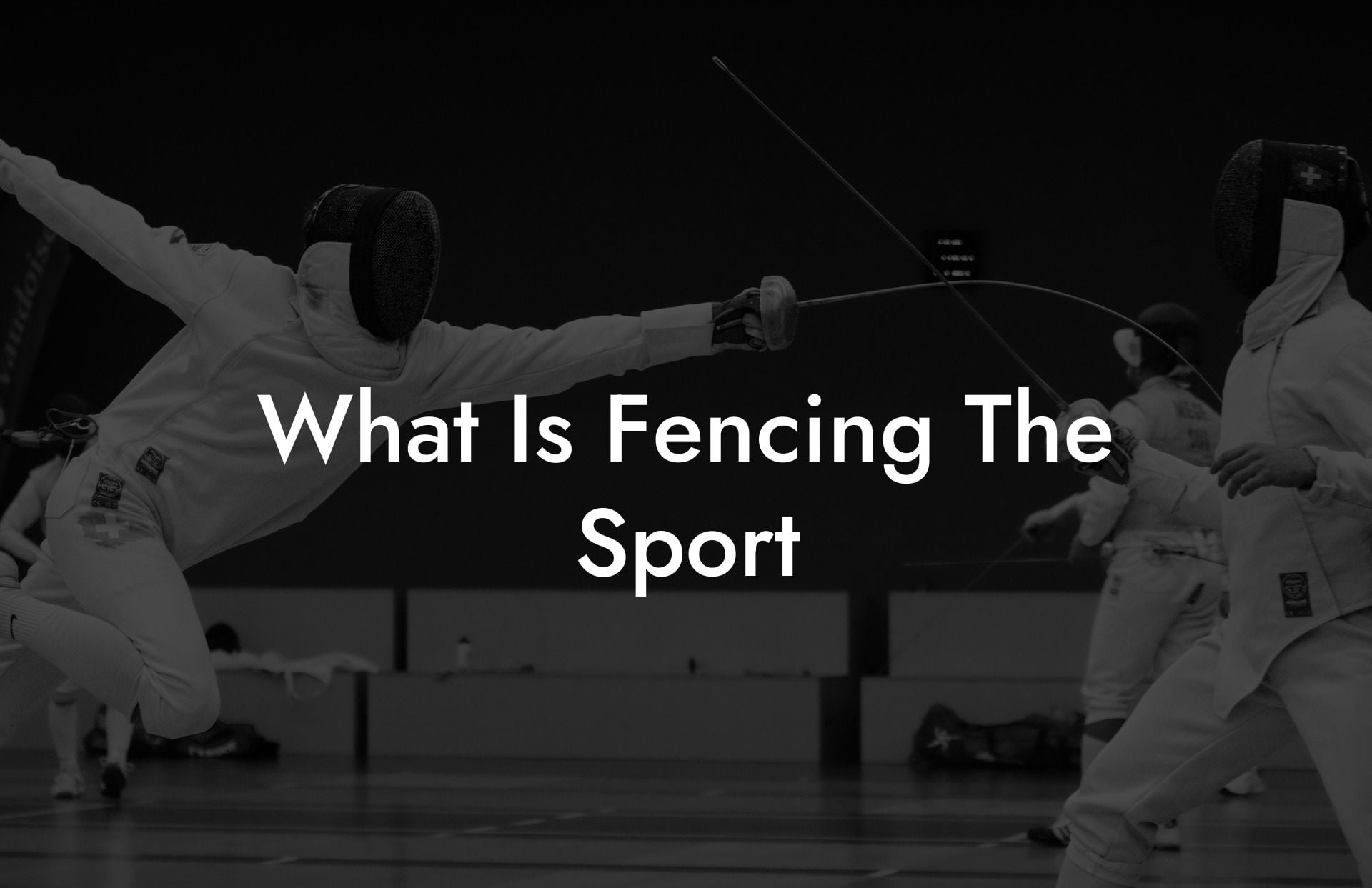Ever wondered about the art and discipline behind those swift, strategic sword battles we often see in movies? The sport of fencing offers an incredible combination of athleticism, strategy, and elegance. But what exactly is fencing, and how did it evolve into the modern sport we know today? Read on to learn about the origins of fencing, its essential disciplines, and what makes it such an intriguing and rewarding pursuit that allows participants to strengthen both their bodies and their minds.
What Is Fencing The Sport Table of Contents
A Brief History of Fencing
The origins of fencing can be traced back thousands of years, with evidence of swordplay found in ancient civilizations such as Egypt, Greece, and Rome. However, it wasn't until the Middle Ages and the Renaissance that fencing began to develop into an organized discipline, with the emergence of fencing schools and the codification of techniques and rules.
The Three Types of Fencing
Modern fencing is divided into three primary disciplines, each with its own unique weapons, protective gear, and techniques:
-
Epee Fencing
Derived from the French word for “sword,” epee is the heaviest and most straightforward of the three fencing disciplines. In epee, the entire body is a valid target, and the weapons used have a larger, more substantial guard. Points are scored through clean, direct hits with the tip of the weapon.
-
Foil Fencing
Originating as a lighter training weapon, the foil is designed for precision and finesse. Foil fencers must target their opponent's torso, and points are awarded based on the proper application of "right of way" rules, which dictate that the fencer who initiates an attack has priority in scoring if their opponent does not successfully defend.
-
Sabre Fencing
Often considered the most dynamic of the three disciplines, sabre fencing features a cutting and thrusting weapon that can be used to score points with both the tip and the edge. The valid target area expands to include the torso, arms, and head, and like foil, the right of way rules apply in determining point allocation.
Fencing Equipment and Safety
Fencers need a specific set of equipment to participate in the sport safely and effectively. This includes:
-
Protective Gear
This encompasses items such as masks, jackets, chest protectors, and gloves that protect both the head and the hands. Fencers are required to wear suitable padding to ensure safety during bouts.
-
Weapons
Depending on the discipline, fencers will use epees, foils, or sabres. Each weapon is tailored to the specific rules and techniques of its respective discipline.
-
Scoring Equipment
Modern fencing utilizes electronic scoring systems to accurately and efficiently determine when a point has been scored. Fencers are connected to a scoring box via special cords that run down their backs and connect to their weapons, ensuring that hits are registered immediately and accurately.
What Is Fencing The Sport Example:
Fencing in Action: A Foil Bout
Two fencers step onto the piste, or fencing strip, each armed with a foil. They put on their masks, connect to the scoring system, and assume their starting positions. The bout begins with the referee's signal as both fencers actively seek to take the offensive and touch their opponent in the designated target area.
One fencer initiates an attack with a quick advance, attempting to strike the other's torso. The defender, reacting swiftly, parries the attack with a well-timed countermove. However, recognizing the failed attack, the attacker immediately disengages and goes for a second lunge, successfully landing their tip on the defender's chest and scoring a point.
This continuous dance of strategy, speed, and precision continues, each fencer adapting and responding to the other's moves until a winner is decided by who accumulates the required number of points first.
Fencing truly represents a remarkable blend of physical skill, mental agility, and strategic acumen. By learning about and participating in this ancient sport, one can cultivate not only athletic prowess but also important life skills such as patience, discipline, and resilience. So, if you'd like to further explore the fascinating world of fencing and perhaps even give it a try yourself, we invite you to continue navigating Anchorage Fencing Club's informative guides and engaging resources. And of course, be sure to share this article with friends and family who might also be intrigued by the captivating sport of fencing.













